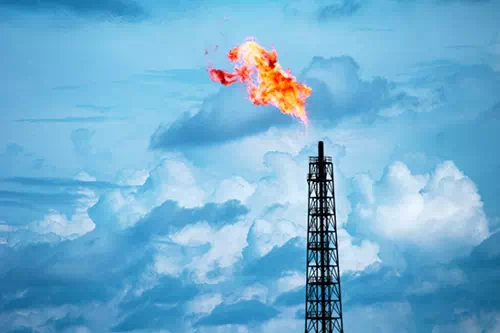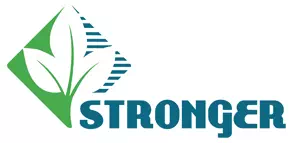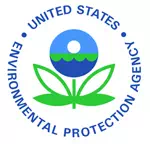|
Site Preparation
The majority of land based oil and natural gas drilling sites are accessed by road; therefore, the equipment is geared toward mobility. First, an access road is built. In many locations, the building of an access road is not difficult, but some areas present complications. In the North Slope of Alaska, for example, building a road that does not melt the permafrost can be both challenging and expensive. Other sites require roads to cross or impact sensitive environments, like streams. Next, a footing for the equipment, usually gravel, is created in areas where the ground may be either unstable or subject to freeze/thaw cycles. Finally, the drilling rig is brought in. For shallow wells, the drill rig may be self-contained on a single truck; for deeper wells, the rig may be brought to the site in several pieces and assembled at the site.
During site preparation, various environmental regulations need to be kept in mind. For example, Section 301 of the Clean Water Act prohibits discharges to waters of the United States, including dredge or fill material, without a Clean Water Act Section 404 permit from the U.S. Army Corps of Engineers. Furthermore, stormwater runoff from construction activities can have a significant impact on water quality (e.g., stormwater runoff polluted with chemicals, sediment, or debris can harm or kill fish and other wildlife, destroy aquatic habitat; high volumes of runoff can cause stream bank erosion, etc.). The CWA NPDES stormwater program requires construction site operators engaged in clearing, grading, and excavating activities that disturb 1 acre or more, including smaller sites in a larger common plan of development or sale, to obtain coverage under an NPDES permit for their stormwater discharges.
Potentially Applicable Regulations
- Clean Water Act (CWA)
- Wastewater Point Source Discharges (Section 402). Where direct discharge of wastewater (e.g., flowback, produced water) is permitted, the owner/operator must obtain a National Pollutant Discharge Elimination System (NPDES) permit. NPDES permits are issued by EPA or authorized states.
- General prohibition of discharges of wastewater pollutants from onshore unconventional oil and gas operations to POTWs. (40 CFR 435) The standards prohibit discharges of wastewater pollutants from onshore unconventional oil and gas (UOG) extraction facilities to publicly owned treatment works (POTWs).
- Wastewater Indirectly Discharged via Publicly Owned Treatment Works (POTW) (40 CFR 302). EPA has established pretreatment standards that apply to wastewater (e.g., flowback, produced water) discharged to POTWs by industry.
- Wastewater Indirectly Discharged via Centralized Waste Treatment (CWT) (40 CFR 302). When wastewater (e.g., flowback, produced water) is transported to a CWT, it is the responsibility of the CWT to properly treat and discharge it.
- Stormwater (Section 402, 40 CFR 122). Stormwater is generated when precipitation from rain and snowmelt events flows over land or impervious surfaces and does not percolate into the ground.
- Waterbody/Wetlands Protection (Sections 401 and 404). Water quality standards and dredge and fill regulations may apply to wetlands and all other jurisdictional waters, including headwater streams.
- Spill Prevention, Control and Countermeasures (SPCC) (Section 311, 40 CFR 112). Includes requirements for oil spill prevention, preparedness, and response to prevent oil discharges to navigable waters.
- Comprehensive Environmental Response, Compensation, and Liability Act(CERCLA) (Section 103). When a chemical release exceeds chemical specific thresholds facilities are required to immediately notify specific authorities.
- Emergency Planning and Community Right-to-Know Act (EPCRA) (Sections 302, 303, 311, and 312). EPCRA requires facilities that use or store hazardous chemicals in certain quantities to report those inventories to state and local emergency planning organizations.
- Endangered Species Act (ESA) The ESA provides a means to protect threatened or endangered species and the ecosystems that support them. It requires Federal agencies to ensure that activities undertaken on either Federal or non-Federal property do not have adverse impacts on threatened or endangered species or their habitat. [not yet covered]
- National Environmental Protection Act (NEPA) NEPA requires that all Federal agencies prepare detailed statements assessing the environmental impact of, and alternatives to, major Federal actions that may "significantly affect" the environment.
- Resource Conservation and Recovery Act (RCRA) Subtitle C (hazardous waste) and Subtitle D (solid waste). RCRA is the primary law for regulating solid and hazardous wastes.
- Clean Air Act (CAA) (Section 112(r)(1)) The General Duty Clause (GDC) applies to owners and operators of all stationary sources which produce, process, handle or store any “extremely hazardous substances.” Extremely hazardous substances are not limited to either the list of regulated substances listed under CAA § 112(r), or the extremely hazardous substances under EPCRA § 302 (40 CFR Part 355, Appendices A and B). The GDC may not be delegated to the states.
- Clean Air Act (CAA) (Section 112(r)(7)) and 40 CFR Part 68, the Chemical Accident Prevention Provisions, require owners or operators of stationary sources to develop a risk management program to prevent or minimize accidental releases of substances found at 40 CFR § 68.130. This program may be used in conjunction with CERCLA and EPCRA.
- Safe Drinking Water Act (SDWA)
- Public Water Systems (PWS, Sections 1411, et seq.) National Primary Drinking Water Regulations may apply when hydraulic fracturing or other oil or natural gas production activities impact a public water system's supply.
- Underground Injection Control (UIC, Sections 1421, et seq.; 40 CFR 144-147) The UIC program regulates the construction, operation, permitting, and closure of injection wells that place certain fluids underground, including fluids which relate to oil and natural gas production and hydraulic fracturing that utilizes diesel fuels
More Resources
NaturalGas.org - Extraction. An educational website maintained by the Natural Gas Supply Association that covers a variety of topics related to the natural gas industry. The purpose of this website is to provide visitors with a comprehensive information source for topics related to natural gas, and present an unbiased learning tool for students, teachers, industry, media, and government.
|






